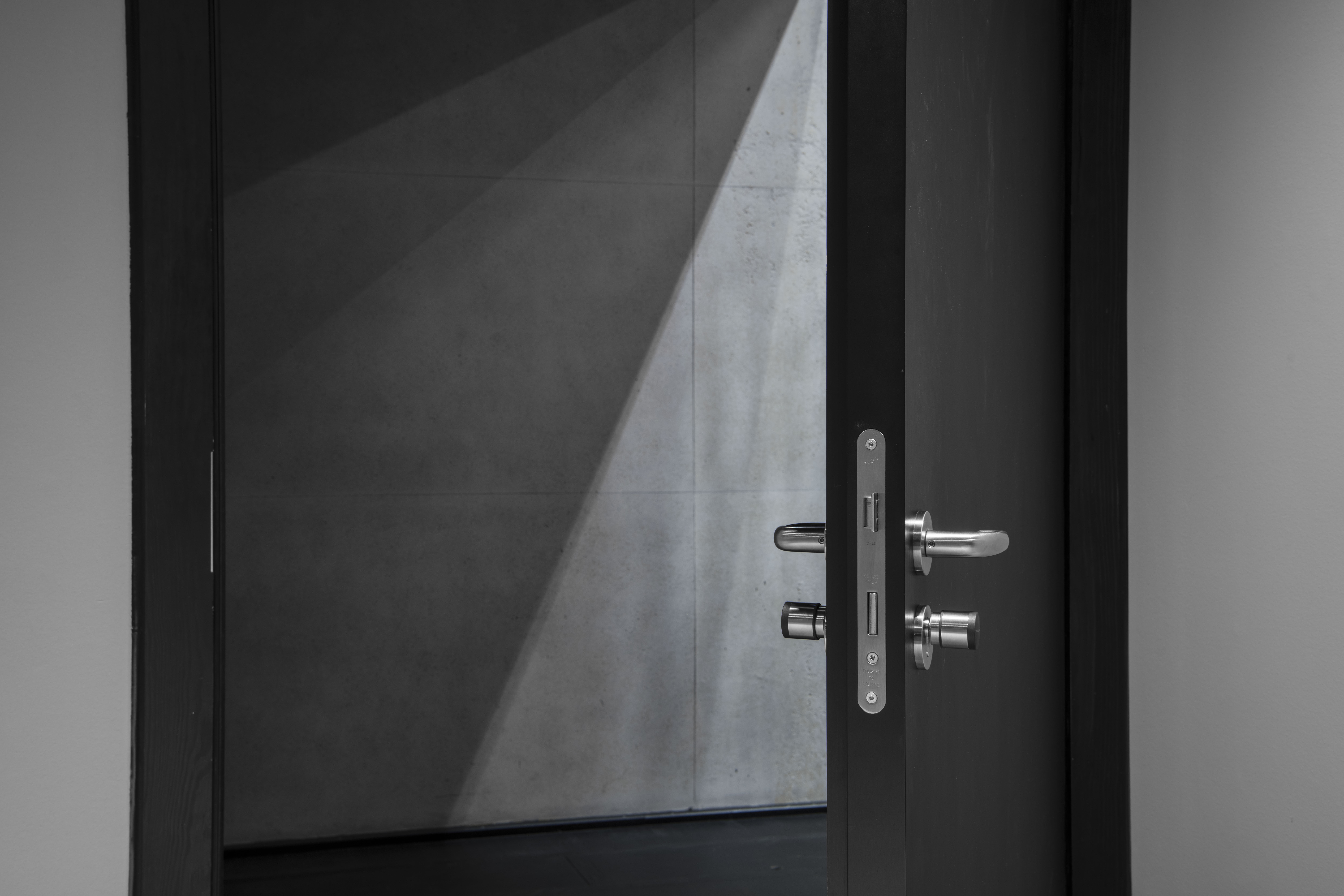
The Benefits of Upgrading Co-Living Spaces to Digital Door Locking Systems
By replacing traditional key-based systems with keyless entry control, co-living buildings can unlock a range of benefits that go beyond the simple act of opening doors.
In today's technology-driven world, co-living spaces are embracing technological advancements to enhance residents’ experiences and improve operational efficiency. One such innovation is upgrading co-living building locking systems to keyless entry control. By replacing traditional key-based systems these buildings can unlock a range of benefits that go beyond the simple act of opening doors.

▶ What is a co-living space?
A co-living space is a type of housing arrangement where individuals or small groups share a living environment, typically in a shared building or apartment complex. In a co-living space,residents have their own private bedrooms or sometimes smaller self-contained units, while sharing common areas such as kitchens, living rooms, and sometimes bathrooms. Co-living spaces often offer fully furnished accommodations and a range of amenities such as communal lounges, co-working spaces, gyms, laundry facilities, and social areas.
According to recent statistics, research done amongst two major co-living spaces in the UK,show that 79% of their residents are aged between 18 and 35. Which is a rapidly growing demographic for these types of housing schemes. The concept of co-living aims to foster a sense of community, promote social interaction, and provide affordable housing options in urban areas, which these individuals might otherwise not have had access to. This new housing trend offers a convenient and hassle-free way of living, as they typically come fully furnished and managed by a property manager who takes care of maintenance and services.
Co-living spaces provide an alternative form of housing that promotes affordability, community, and convenience, making them an attractive option for those seeking a balance between privacy and shared experiences but with a high number of residents, security needs to be a priority to ensure the safety of all residents. A keyless entry system can provide an easy-to-manage and flexible solution for co-living spaces.
▶ What is keyless entry control?
Ever see a door open for someone by having them simply punch in a PIN or wave a plastic card in front of a reader? That’s keyless entry control. It refers to a security system that allows authorised individuals to gain entry to a facility, room, or area without the use of traditional physical keys. Instead of traditional keys, access control systems utilise alternative methods of authentication, such as keycards, fobs or mobile applications, to grant or deny access. These systems rely on electronic locks and a centralised control system to manage and monitor access permissions.
The keyless entry systems can be implemented in various settings, including residential buildings, commercial spaces, holiday properties, educational institutions, healthcare facilities, and more. They provide a modern and efficient approach to managing access, enhancing security, and streamlining operations.
▶ Types of Electronic Door Locks :
Before we dive into how the electronic door locks work, let's take a look at the most popular types of electronic locks available in the market.
1. Magnetic Stripe Locks
Magnetic stripe locks are one of the earliest types of electronic door locks. These locks use a magnetic stripe card, similar to a credit card, to unlock the door. The card is programmed with a unique code that corresponds to the lock, allowing guests to access their room.
2. Smart Card Locks
Smart card locks are an advanced version of magnetic stripe locks. These locks use a smart card, which contains a microchip that stores the room access code. When the guest inserts the card into the lock, the microchip communicates with the lock's reader, and the door is unlocked.
3. Proximity Card Locks
Proximity card locks are similar to smart card locks but use radio frequency identification (RFID) technology to communicate with the lock's reader. The guest holds the card near the lock, and the lock's reader detects the card's signal, unlocking the door.
▶ How Electronic Co-living Door Locks Work
Now that we've explored the different types of electronic door locks let's take a closer look at how these locks work.
Programming the Lock
The first step in installing an electronic co-living space door lock is to program the lock with a unique access code. This code can be programmed using a specialised software program, which is often provided by the lock manufacturer. The access code is typically a combination of numbers or letters, and it can be changed or updated as needed.
Issuing Access Credentials
Once the lock is programmed, the next step is to issue access credentials to the tenants. This can be done using a magnetic stripe card, a smart card, a proximity card, or another type of access device, depending on the type of lock installed. The access credentials are programmed with the access code, and they can be activated or deactivated as needed.
Unlocking the Door
When a tenant wants to enter their room, they present their access credentials to the lock. The lock's reader reads the access code, and if it matches the code programmed into the lock, the door is unlocked. Some locks also require the resident to enter a PIN code, providing an additional layer of security.
Monitoring Access Activity
Electronic door locks can also monitor access activity, by creating logs of who accessed the room or facility at what time. This can prove to be valuable information if ever there were to be nefarious activity on the property.
▶ Benefits of Upgrading to Keyless Entry Door Systems:
Improved Security:
Keyless entry and digital locking systems provide enhanced security measures compared to traditional lock and key systems. With multiple residents entering and exiting the building daily, security should be a top priority for any building manager. With keyless entry, co-living spaces can eliminate the risk of lost or stolen keys and associated security vulnerabilities. Keycards or mobile apps used in keyless door entry systems can be easily deactivated in case of loss, ensuring that only authorised individuals can access the rooms or building facilities. Additionally, keyless systems offer features such as audit trails and real-time monitoring, allowing management to track access activities and quickly identify any security breaches. This gives residents an extra layer of security and peace of mind for the safety of their possessions.
Enhanced Convenience for Residents:
These systems offer unparalleled convenience for residents. Instead of carrying physical keys, tenants can simply use a keycard or mobile app to access their rooms. This eliminates the need for them to wait for building managers to be provide them with keys when they need to enter the building.
Operational Efficiency:
Upgrading to keyless entry control systems can significantly improve operational efficiency for management staff at co-living buildings. With traditional lock and key systems, managing physical keys can be a time-consuming and cumbersome task. These state-of-art systems eliminate the need for physical keys, reducing administrative overhead and the costs associated with rekeying locks. Additionally, property managers can remotely grant or revoke access permissions from a centralised system when needed.
Customisation and Personalisation:
One of the advanced benefits is that these systems can offer personalised experiences to the residents in co-living spaces. With advanced technology, building managers can program keycards to provide customised access permissions for various areas within the co-living property, such as fitness centres, spas, or business centres. This level of customisation enhances resident satisfaction, as they can enjoy tailored access to facilities based on their preferences and needs.
No hard wiring
No need for hardwiring or running cables to the doors so installation is quick and easy
Battery Operated
SimonsVoss’ electronic doors are battery operated so there is no electricity consumption making the electronic locks more eco friendly and more cost-effective
Flexibility
Flexibility to choose a system that suits the building's needs - the systems can be customised according to the building’s needs. The flexibility of keyless door systems ensures that operators can select the solution that aligns with their budget, technological capabilities, and the preferences of their tenants
Remote Access
Remote access control for easy management - access control systems often come with remote access control capabilities, allowing building managers to grant or revoke access permissions from a centralised device or software platform
Seamless Integration with Amenities
Many co-living spaces offer shared amenities such as gyms, co-working spaces, and communal areas. Keyless entry systems can be integrated with these amenities, allowing residents to access them using their existing access credentials. This integration enhances the overall user experience and streamlines the management of shared facilities.
Keyless entry systems provide heightened security by allowing access only to those who have been authorised. With traditional mechanical locks, it's easy for someone to duplicate a key, and there's always the risk of a key being lost or stolen. But, with electronic locks and keycards, access can be controlled, tracked, and revoked if necessary, offering a higher level of security.
▶ FAQs about Making Use of Keyless Entry Systems in Co-living Spaces
Q: Are digital locks safe and secure for co-living environments?
A: Digital locking systems can provide high levels of safety and security in co-living environments. They often utilise encryption technology and advanced authentication methods to protect against unauthorised access. However, it's important to choose reputable and well-tested digital lock systems to ensure their effectiveness, such as the System3060 from SimonsVoss.
Q: What are the advantages of using digital locks in co-living spaces?
A: Digital locks offer several advantages in co-living spaces. They provide convenience by eliminating the need for physical keys, allow for easy access management, enable remote control, and can be integrated with other smart home devices. They also offer improved security features and can track access events for added accountability.
Q: What happens if there is a power outage with digital locks?
A: The digital locks and keyless entry systems from SimonsVoss are battery powered, so a power failure will not reduce efficacy of the locking system.
Q: Can digital locks be easily hacked or compromised?
A: While no security system is completely foolproof, reputable digital lock manufacturers like SimonsVoss employ robust encryption protocols and security measures. Choosing high-quality, well-reviewed digital locks and regularly updating firmware can significantly reduce the risk of hacking or compromise.
Q: How are digital lock codes managed and assigned in co-living spaces?
A: Digital lock codes are typically managed by the co-living space management. They can be assigned to residents individually or changed periodically for added security. Digital locks may also allow temporary access codes for guests or service providers.
Q: What measures are taken to protect residents' privacy and personal information in relation to digital locking systems?
A: Respecting residents' privacy and protecting personal information is crucial. Co-living spaces should ensure that digital lock systems adhere to privacy regulations and data protection policies. Implementing strong encryption, secure data storage, and access controls helps safeguard residents' information.
Q: How can digital locking systems be customised or tailored to suit the specific needs of different co-living spaces?
A: Digital locking systems can often be customised to meet the specific needs of co-living spaces. This customisation may include features like multi-factor authentication, remote access management, integrations with specific software or platforms, and flexible access control options.
Q: What happens if a resident forgets their access code or loses their digital key?
A: Procedures should be in place to handle situations where residents forget their access code or lose their digital key. This may involve a verification process to confirm their identity, temporary access granted by the co-living space management, or the ability to reset access codes through a secure process.
Q: Can the digital locking system be remotely monitored or controlled by the co-living space management?
A: Yes, many digital locking systems allow for remote monitoring and control by the co-living space management. This enables them to manage access permissions, monitor lock activity, receive real-time alerts, and remotely grant or revoke access when necessary.
Q: What happens if a resident moves out or is no longer authorised to access the co-living space? How is access revoked?
A: When a resident moves out or is no longer authorised to access the co-living space, access can be revoked by deleting their assigned code or digital key from the system. Some digital locks offer the ability to remotely disable access for specific users.
Q: Can digital locks be integrated with existing traditional lock systems in co-living spaces?
A: In some cases, digital locks can be integrated with existing traditional lock systems in co-living spaces. This integration allows for a gradual transition to digital locks while still providing compatibility with existing infrastructure and keys. However, it depends on the specific lock models and compatibility options available.

Keyless door entry systems offer many benefits and advantage for co-living spaces. They are more convenient, secure, efficient, and flexible, and can enhance the overall experience of tenants. As technology continues to evolve, it is likely that access control systems will become even more prevalent in the industry. SimononsVoss offers an all-round solution in keyless entry with the System3060, perfect for co-living spaces. Contact our access control experts for more information on how these systems can benefit your industry.
